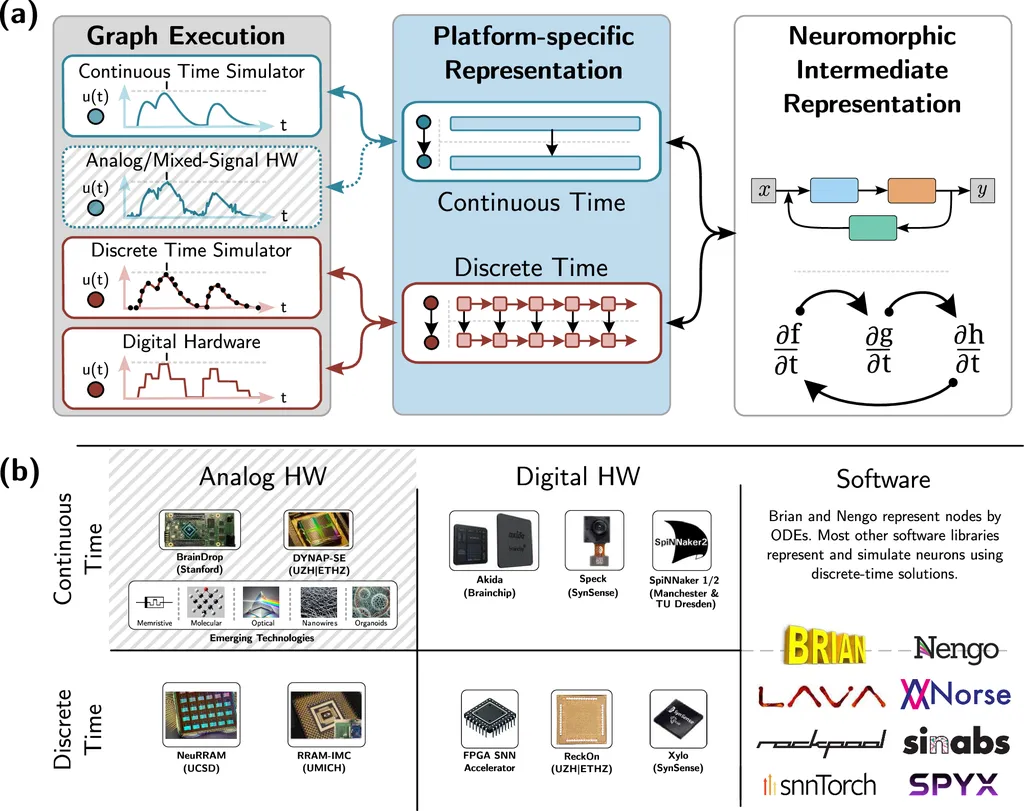In the pursuit of energy-efficient and advanced computing systems, a team of researchers from Kiel University in Germany, led by Professor Rainer Adelung, has made significant strides in the field of neuromorphic computing. Their work focuses on developing liquid-based systems that mimic the brain’s architecture and functionality, potentially revolutionizing the energy sector’s computational needs and data processing capabilities.
The researchers have introduced ionotronic systems, which combine the movement of both electrons and ions, to create dynamically reconfigurable conductive filaments. These systems employ an electrolyte with an anode reservoir that produces ions in-situ, allowing for electrode-dependent tunability and sustained operation without ion depletion. This innovation addresses current challenges in developing liquid-based neuromorphic material systems with facile fabrication, three-dimensional processing, and brain-like conductivity.
The team presented four ionotronic systems that grow three-dimensional wires, inspired by the brain’s structure, contacting two or more electrodes. These systems exhibit resistive switching at both micrometer and nanometer scales, demonstrating hierarchical organization and functionality. The conducting filaments can be disrupted by an external electric field or dissolved over time within the ionotronic system, emulating the blooming and pruning aspects of synaptic plasticity.
The practical applications for the energy sector are promising. Neuromorphic computing systems inspired by this research could lead to more energy-efficient data processing and storage solutions. By mimicking the brain’s architecture, these systems could handle complex tasks with significantly lower energy consumption, benefiting data centers, smart grids, and other energy-intensive computational processes. Additionally, the dynamic reconfigurability of these systems could enable on-demand adaptation to changing energy demands and conditions.
This research was published in the journal Advanced Materials Technologies, highlighting the potential of ionotronic systems to advance the field of neuromorphic computing and contribute to more sustainable and efficient energy solutions.
This article is based on research available at arXiv.

